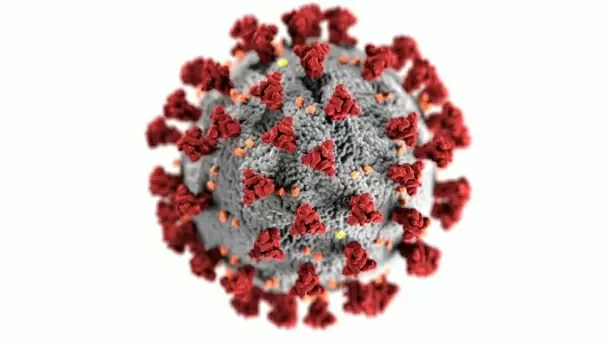Potential Covid medication found among tapeworm drugs: Study
New York
07-August-2021

Photo:IANS
A group of medications long prescribed to treat tapeworm has inspired a compound that shows two-pronged effectiveness against Covid-19 in laboratory studies, a new study suggests.
"It has been known for 10 or 15 years that salicylanilides work against certain viruses. However, they tend to be gut-restricted and can have toxicity issues," Janda said.
The compound overcomes both issues, in mouse and cell-based tests, acting as both an antiviral and an anti-inflammatory drug-like compound, with properties that auger well for its use in pill form.
The modified salicylanilide compound that Janda created was one of about 60 that he built years ago for another project.
When the SARS-CoV-2 virus became a global pandemic in early 2020, knowing that they may have antiviral properties, he started screening his old collection, first in cells and later in rodent studies.
The study indicated that one compound stood out. Dubbed simply "No 11," it differs from the commercial tapeworm medicines in key ways, including its ability to pass beyond the gut and be absorbed into the bloodstream -- and without the worrisome toxicity.
Watch This TWL Video
About 80 per cent of salicylanilide 11 passed into the bloodstream, compared to about 10 per cent of the anti-parasitic drug niclosamide, which has recently entered clinical trials as a Covid-19 treatment, the researcher said.
The experiments showed that of the many modified salicylanilides he had built in his laboratory, No 11 affected pandemic coronavirus infections in two ways.
First, it interfered with how the virus deposited its genetic material into infected cells, a process called endocytosis which requires the virus to form a lipid-based packet around viral genes.
The packet enters the infected cell and dissolves, so the infected cell's protein-building machinery can read it and churn out new viral copies. No 11 appears to prevent the packet's dissolution.
"The compound's antiviral mechanism is the key," Janda said.
"It blocks the viral material from getting out of the endosome, and it just gets degraded. This process does not allow new viral particles to be made as readily," the researcher added.
Importantly, because it acts inside cells rather than on viral spikes, questions about whether it would work in new variants like Delta and Lambda aren't a concern, he adds.
"This mechanism is not dependent on the virus spike protein, so these new variants coming up aren't going to relegate us to finding new molecules as is the case with vaccines or antibodies," Janda said.-IANS
More Headlines
Chennai Police Hunt Suspects After Brutal Kotturpuram Double Murder
Haryana BJP Leader Shot Dead Over Land Dispute On Holi: Police
Mumbai Police Bust High-Profile Sex Racket in Hiranandani Hotel
NPG Evaluates 8 Key Infrastructure Projects Under PM GatiShakti Plan
Rupee Symbol Debate Heats Up as Tamil Nadu Opts for ‘ரூ’
Chennai Police Hunt Suspects After Brutal Kotturpuram Double Murder
Haryana BJP Leader Shot Dead Over Land Dispute On Holi: Police
Mumbai Police Bust High-Profile Sex Racket in Hiranandani Hotel
NPG Evaluates 8 Key Infrastructure Projects Under PM GatiShakti Plan
Rupee Symbol Debate Heats Up as Tamil Nadu Opts for ‘ரூ’










